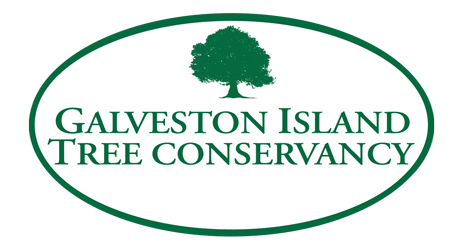Cottonwood
Remember the Cottonwood!
There is a very special Ike survivor tree in Galveston, perhaps the only one of its kind on the Island. This huge beauty is an Eastern Cottonwood (Populus deltoids) in residence at the corner of 46th and Avenue R½. A Texas legend (unproven of course) claims that a shrine of Texas independence may be named for this member of the Poplar family, which in Spanish is “alamo”. Founding missionaries were supposedly so impressed by a grove of cottonwood trees growing along the San Antonio River that they named their mission for them.
Galveston’s Women Health Protective Association planted 400 cottonwoods in 1921 during their reforestation efforts following the multiple damaging hurricanes of the early 20th Century. It is unlikely that our current specimen dates back that far, as the lifespan of the cottonwood can occasionally reach 70 but rarely 100. The current homeowner says it was there when he arrived 20 years ago, and neighbors say it has been there “forever”. The tree has certainly been through many hurricanes, droughts and floods and remains in remarkable shape. Despite their relatively short lifespan, cottonwoods are very fast growing so big trees are a common sight. However long it’s been there, this tree is well-loved and the homeowner has supported large limbs to prevent their loss.
Cottonwood is a Texas native usually found near water throughout the eastern half of the state. Large leaves provide cooling shade, and shake from the slightest breeze with a soothing, watery sound due to their flexible flat leaf stems. Bark on young trees is silvery-white, smooth or lightly fissured, and our Galveston tree has the dark gray and strikingly deeply fissured bark of older specimens.
Cottonwood gets its name from seeds covered with tiny cottony hairs which do not increase its popularity with neighbors. The spring “cotton” travels easily on the wind, providing somewhat messy deposits on car windshields, lawns, window screens, and in air conditioner filters. Dark green leaves of summer often turn yellow to provide fall color prior to leaf drop.
The tree is generally tolerant of imperfect drainage and various soil types, although it prefers sand or sandy loams with decent moisture but not constant flooding. It can survive moderate but not extended drought. Its popularity for street or landscape use is diminished by a shallow root system, weak and brittle wood, messy “cotton' of female trees, and the relatively short lifespan
Cottonwoods are part of America’s history as they welcomed early pioneers moving west. Their welcome sight promised shade for comfort, timber for building, and leaves and bark for livestock food as well as a bitter medicinal tea. In regions with few trees, the highly visible cottonwoods often served as gathering places and trail markers, and as sacred objects for several Plains tribes. Today, its lumber may become plywood, matches, crates, boxes, and paper pulp. Nature lovers appreciates the tree as a host plant for the caterpillars of several butterflies.
This rare Galvestonian is worth a visit. See a bit of history and perhaps glimpse some fall color!
“Tree Stories” is an ongoing series of articles about Island trees, tree care, and tree issues. If you have or know of a special tree on Galveston Island that should be highlighted, please email treesforgalveston@gmail.com. Margaret Canavan is a Galveston resident, a Galveston County Master Gardener, and a member of the Galveston Island Tree Conservancy Board.
Hurricane Ike caused the loss of 40,000 trees on Galveston Island. The Galveston Island Tree Conservancy was formed to address that loss and has replaced over 15,000 through grant-funded plantings and giveaways.

